Introducing ePMF: The Greenhouse Gas Emissions Applications Framework from Elite
The need to reduce Greenhouse Gas (GHG) emissions and facilitate the transition to Net Zero is critical.
This is why Elite Energy Consultants, in collaboration with our partners at Nexia Edwards Marshall, developed the ePMF GHG Emissions Applications Framework.
Our tool comprehensively addresses Scope 1, 2, and 3 emissions, providing a robust solution for organisations committed to sustainability.
About the Application Framework
To help businesses comply with legal obligations, Elite Energy Consultants created an application framework for Greenhouse Gas (GHG) Emissions in EnergySys.
The framework attempts to foster creative thinking and debates on client-specific GHG configuration to ensure the suggested solution precisely satisfies the client's operational and system requirements.
This method allows the client to comprehend and make educated adjustments by ensuring transparency, alignment, and clarity regarding the implementation path.
Provides a structured approach to calculating and reporting greenhouse gas emissions.
Aims to provide a centralised, transparent and auditable solution for all GHG emission-related activities.
Designed to integrate with other applications seamlessly.
Enables companies to report emissions and energy in compliance with legislative requirements.
Implementing an automated solution allows the GHG team to focus on high-value activities.
Provides crucial metrics, including information about critical emitters and emission intensity.
Scope 1 & 2
Find out more Scope 1 & 2 here:
The GHG application was designed to integrate with other applications seamlessly. Figure 1 to the right illustrates the GHG application in alignment with the Production Allocation application. The intrinsic relationship between the two applications is discussed in the paper Greenhouse gas emissions tracking: making it count, by Dr Terzini (Elite) and Dr Hayes (EnergySys), 2023.
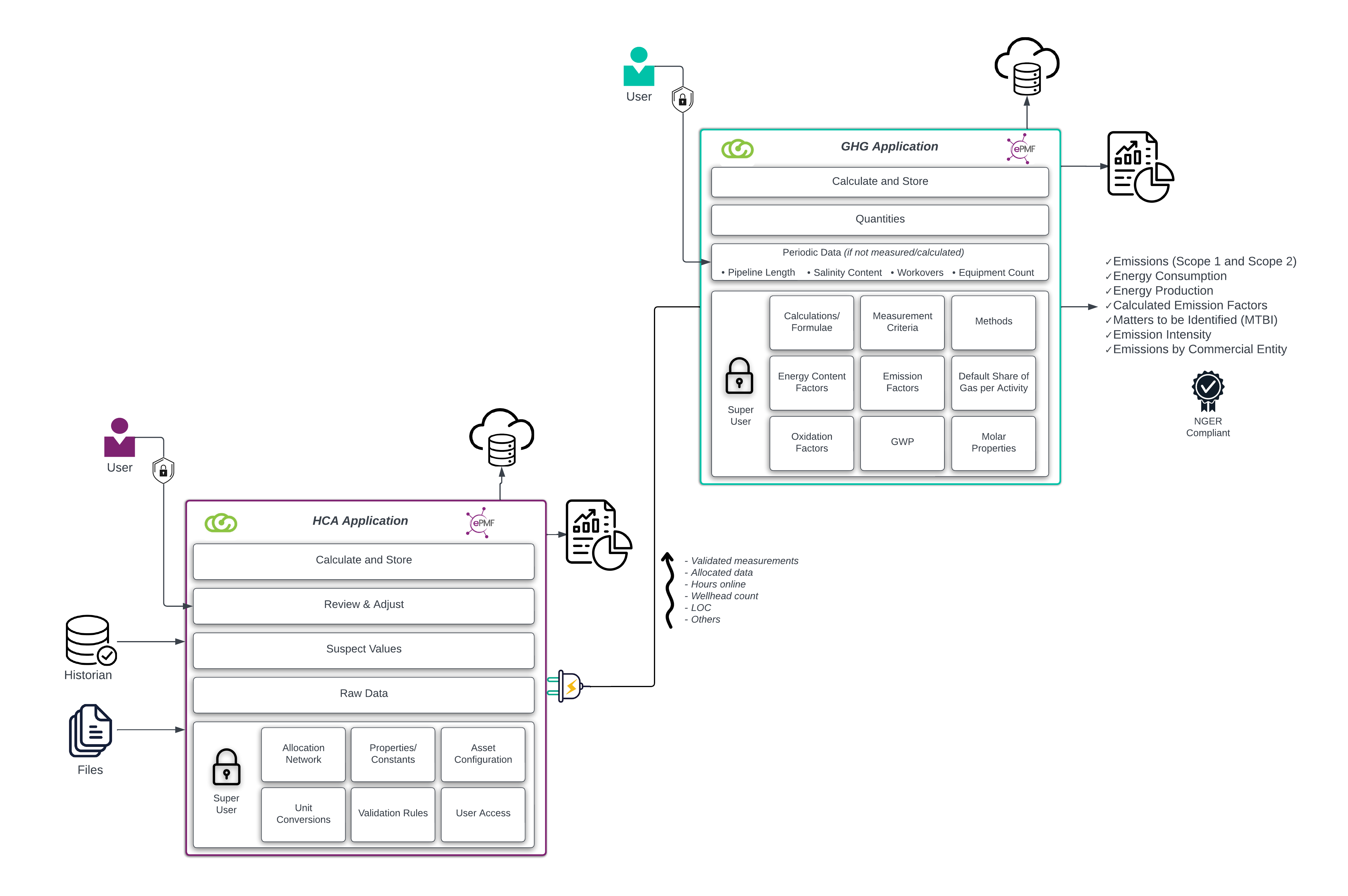

As shown in Figure 1 above, critical information required to perform the GHG emissions and energy calculations is already available in the system and flows seamlessly to the GHG processes. These include (not limited to) the features seen on the left:
In addition, emission factors, energy content factors, the methods used for estimating emissions/ energy, measurement criteria, and semi-static data (e.g. pipeline length, equipment count, salinity content of water, etc) are also stored and secured in the system.
The system also allows pre-defined users to update these values if amendments are required to meet legislative or business requirements, providing a transparent and auditable solution.
Given the hierarchical structure of the GHG emissions, the GHG application provides a flexible way to report emissions.
All the GHG-related data are stored in the database. They can be used to generate dashboards to assist the business with their emissions reduction initiatives and reports to meet statutory requirements. Critical GHG data is readily available, including:
- Emissions (Scope 1 and Scope 2 per greenhouse gas – CH4, CO2, N2O, SF6, and total)
- Energy Consumption
- Energy Production
- Calculated Emission Factors
- Matters to be Identified (MTBI)
- Emission Intensity
- Emissions by Commercial Entity
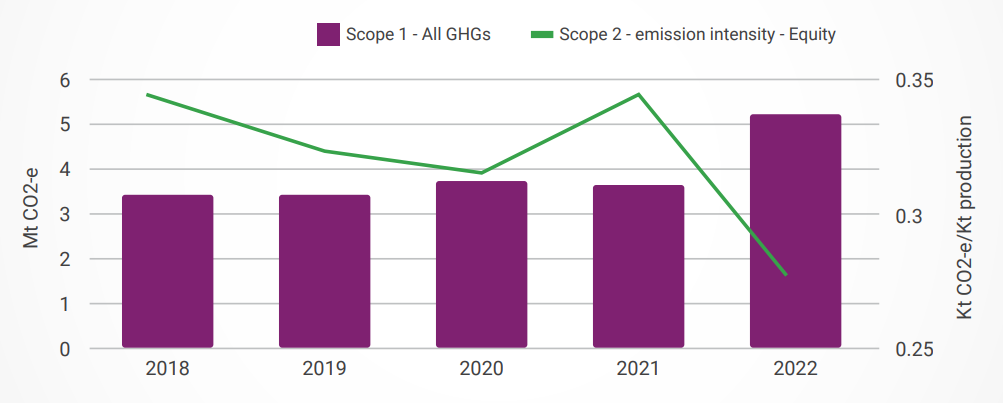
Understanding Scope 3 Emissions
Scope 3 encompasses a total of 15 diverse categories, divided into upstream and downstream emissions.
Upstream emissions are those generated by external entities involved in supplying, manufacturing, and transporting the raw materials and components utilised in your operations.
Conversely, downstream emissions include those related to logistics, usage and end-of life disposal of your products.
Upstream emissions explained.
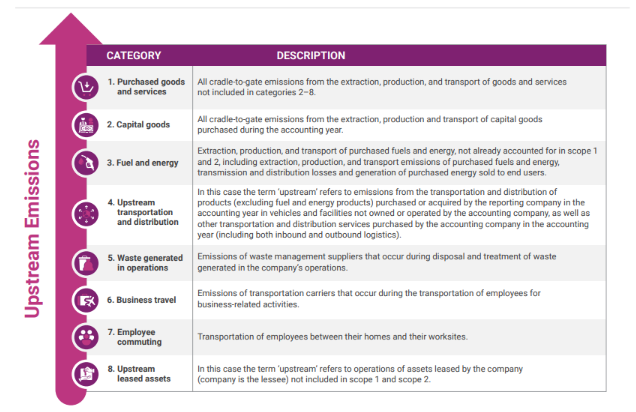
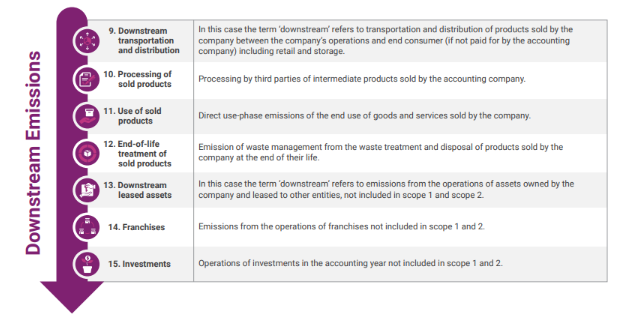
Downstream emissions explained.
Our Approach
We understand that navigating the complexities of Scope 3 emissions can be challenging.
That's why we provide extensive support from the initial stages of identifying which emissions sources matter most to your business, to the full implementation of effective tracking and reporting systems.
Our approach begins with a thorough screening process, designed to pinpoint the activities within your value chain that have the most significant impact on your Scope 3 emissions.
Sustainability & reporting requirements, operations & boundaries
Calculation workflows, automation
Data measurements & quality, calculation methodologies, integration among other applications
Pilot and testing, user acceptance
Key Features
Designed for maximum flexibility and transparency, our applications feature an intuitive structure with dedicated tables for a variety of data types, including for example emissions factors, emission activities, inflation factors and transmission & distribution (T&D) losses. The key features are:
Each emissions factor is documented
Emissions factors and calculation methods can be seamlessly updated.
Average Data Calculation
Supplier-Specific Calculation
Distance-Based Calculation
Spend-Based Calculation
Fuel-Based Calculation
Waste-Type-Specific Calculation
The application displays data with varying levels of detail across multiple screens, ensuring users can easily find the specific information they require.
Additional screens within the application aggregate emissions data across various logical levels, offering a comprehensive overview that can be customised to align with business-specific needs.
Our system is designed to seamlessly integrate with other applications and tools, ensuring a smooth data change.
Upon receiving the data, it undergoes a validation process.
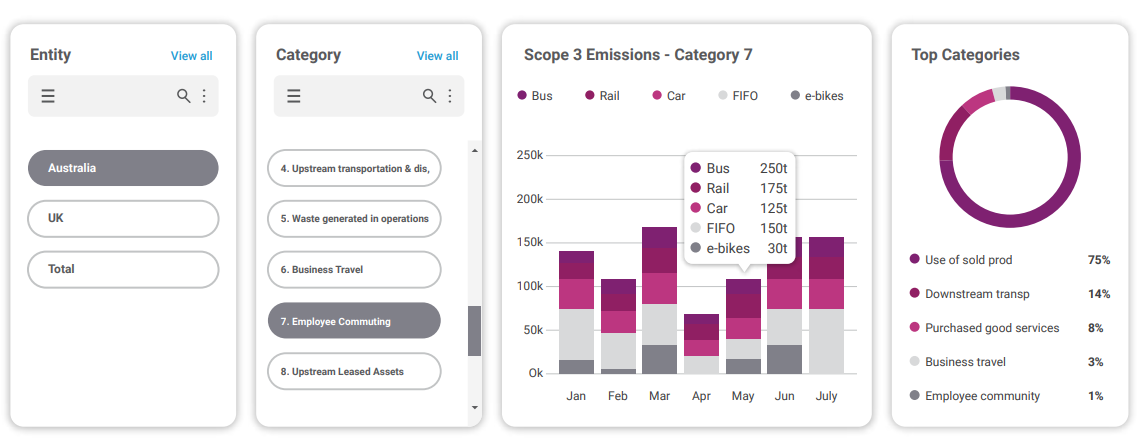
What do the dashboards look like?
Dr Fabio Terzini is the CTO for CarbonOptics, a joint venture between Elite Energy Consultants and Nexia Edwards Marshall, and has been supporting the delivery of specialised engineering and IT projects around the globe. Dr Terzini is a chemical engineer and holds a PhD in reservoir engineering from The University of Queensland in Australia. Prior to joining Elite Energy Consultants, Dr Terzini worked with Worley and Advisian on various large-scale projects in Australia, New Zealand and Brazil. Dr Terzini has also interest in hydrogen production, CCUS and greenhouse gas emissions.

Ready to learn more? Contact our team to set up a free consultation!